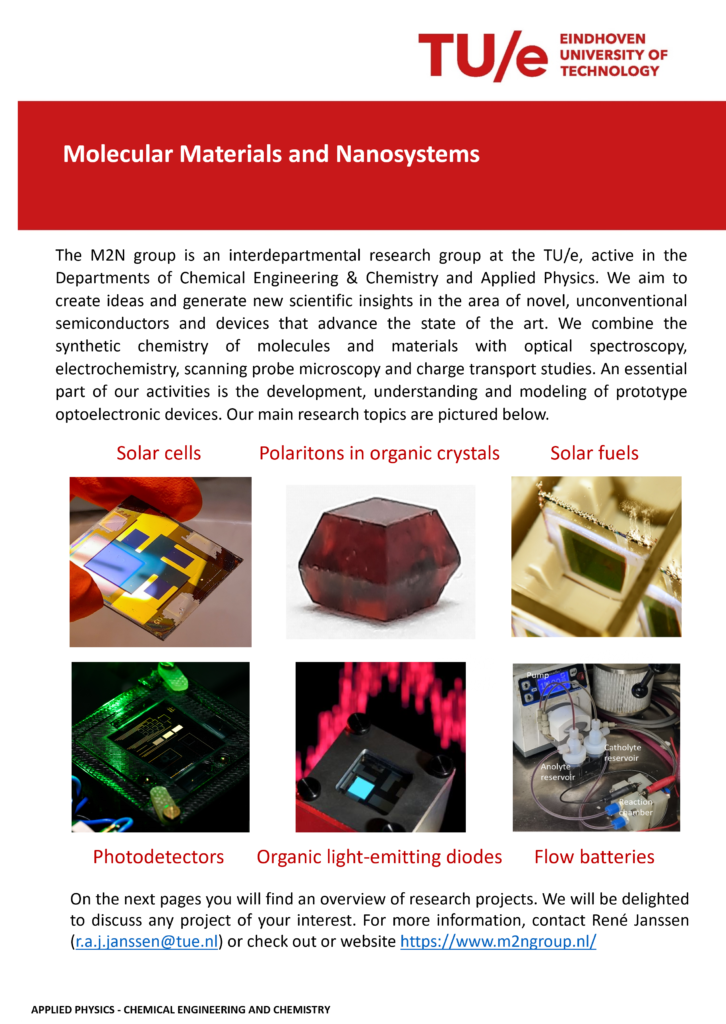Master projects
The M2N group welcomes Master students from Chemical Engineering and Chemistry, Applied Physics, and Sustainable Energy Technolgy at the TU/e to perform their final project. For general information on our research program and possible topics for your final MSc project, please contact René Janssen. If you have a specific topic in mind, you will find the appropriate contact person below. We will be happy to discuss other options with you to tailor your project to your interest and talents.
Some current options for Master Projects:
- Mobile ions in perovskite solar cells, contact Guus Aalbers
- Charge extraction to transport layers in perovskite solar cells using transient photoluminescence spectroscopy, contact Guus Aalbers
- Synthesis and use of quinacridones for non‐aqueous redox flow batteries, contact Nicolas Daub
- Device optimization of mixed metal, mixed halide perovskite solar cells with ideal bandgap, contact Lana Kessels
- Molecular magic mirrors, contact Stefan Meskers
For other options, please see the list below for topics and contact persons:
 Solar cells, polaritons and photodiodes
Solar cells, polaritons and photodiodes
Solar cells. Contact: René Janssen or Martijn Wienk
Polaritons in organic semiconductors. Contact: Stefan Meskers
Photodiodes. Contact: René Janssen
Organic light-emitting diodes
Monte Carlo simulations. Contact: Reinder Coehoorn or Peter Bobbert
Pulsed photoluminescence experiments. Contact: Reinder Coehoorn
Models for hopping transport in organic semiconductors. Contact: Peter Bobbert
Storing renewable energy
Solar fuels. Contact: René Janssen
Oxygen evolution recation. Contact: Kees Flipse
Organic redox flow batteries. Contact: René Janssen